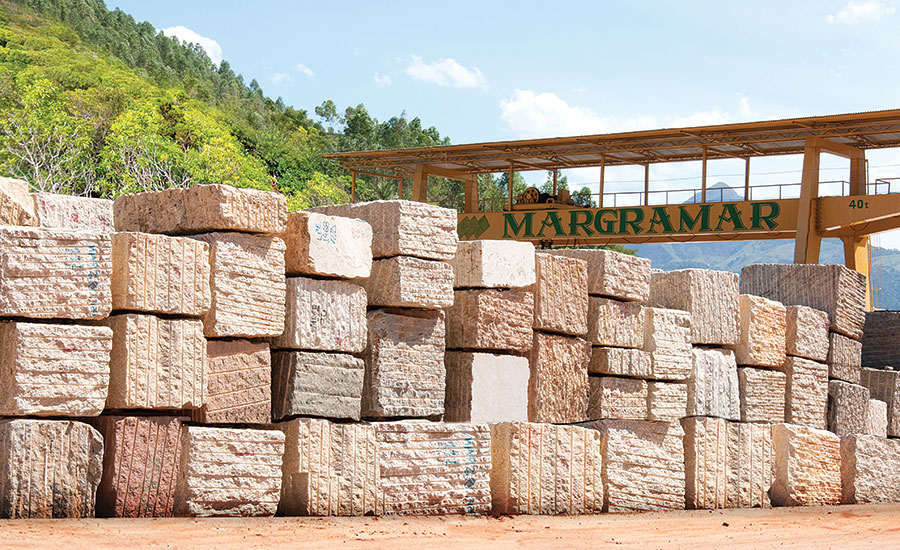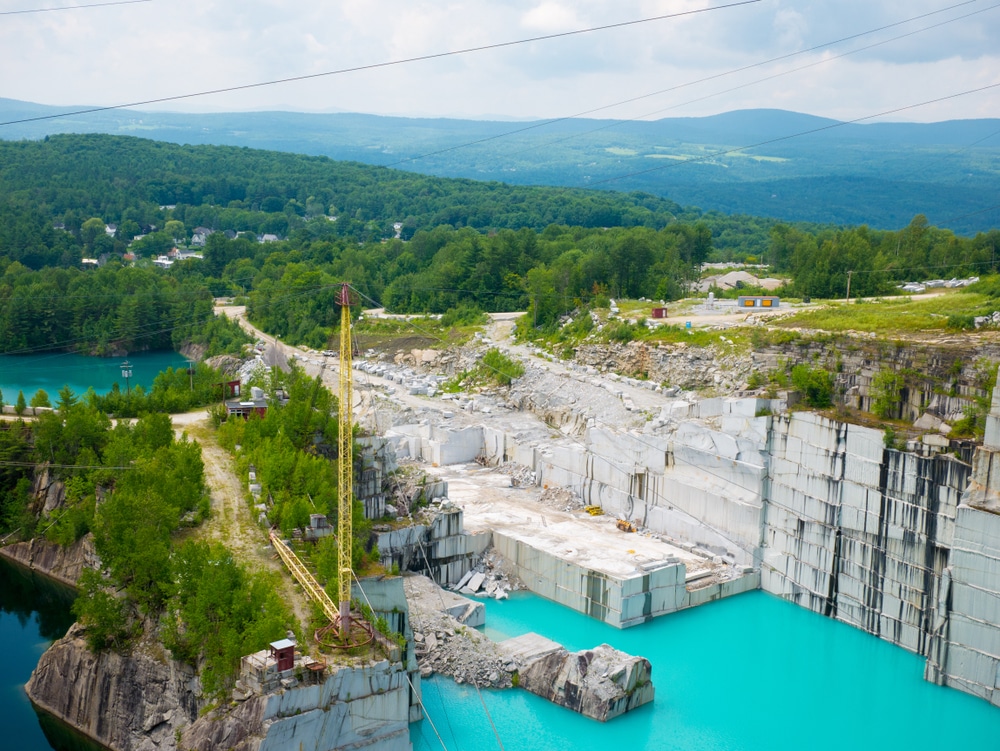Journey Into Rustenburg's Geological Wonders: Granite Quarries in Rustenburg
Journey Into Rustenburg's Geological Wonders: Granite Quarries in Rustenburg
Blog Article
From Quarry to Kitchen Counter: Comprehending the Refine of Granite Removal
Granite, a preferred selection for kitchen counters because of its longevity and aesthetic allure, undertakes an interesting journey from the midsts of a quarry to its last location in our cooking areas and shower rooms. As we delve into the detailed procedure of granite extraction, we will certainly uncover the keys behind the development of these marvelous rock deposits, discover the techniques and tools employed in quarrying, and unravel the steps involved in transforming raw granite obstructs into polished and ended up counter tops. From the geological origins to the careful craftsmanship, this journey promises to disclose the exceptional tale behind the development of these practical and classic pieces.
Formation of Granite Down Payments
The formation of granite deposits is a geologic process that involves the steady cooling and solidification of lava deep within the Planet's crust. Granite, a common kind of igneous rock, is formed when molten magma cools down and strengthens over extended periods of time. This process takes area underneath the Planet's surface area, typically at midsts of numerous kilometers.
Granite is mainly composed of 3 main minerals: mica, quartz, and feldspar. These minerals integrate to offer granite its characteristic appearance and appearance. As the lava cools down, the minerals take shape and interlace, developing a tightly loaded framework. The sluggish air conditioning procedure enables the growth of large crystals, which provide granite its unique rough structure.
The development of granite deposits is commonly related to structural activity, such as the accident of continental plates or the ascent of lava from the mantle. The intense heat and stress produced during these procedures add to the melting of rocks and the succeeding formation of lava.
Over countless years, the solidified granite is exposed at the surface area via disintegration and uplift. This is when granite deposits can be quarried and removed for various applications, consisting of kitchen counters, flooring, and building and construction materials.

Quarrying Techniques and Equipment
Quarrying strategies and tools play an important function in the reliable extraction of granite deposits for various commercial applications. The process entails using specialized tools and equipment that ensure the safe and smooth removal of granite obstructs from the quarry website.
One of the primary strategies made use of in granite quarrying is piercing (granite quarries in rustenburg). This entails using boring machines outfitted with diamond-tipped drill little bits. These devices develop openings in the rock surface area, enabling the insertion of explosive fees. Once the charges are detonated, the resulting surge breaks the granite into manageable blocks.
Along with exploration, reducing and splitting equipment are likewise necessary in granite quarrying. Cable saws and high-pressure water jets are typically utilized to puncture the granite. These methods are effective in separating the granite into specific blocks, which can then be more refined.
Loading and transporting devices are vital in the transport of granite obstructs from the quarry to the handling facility. Heavy-duty trucks and forklifts are commonly used to move the blocks, ensuring their risk-free and reliable transfer.

Removal and Transport of Granite Blocks
With the conclusion of the quarrying strategies and tools section, we now turn our interest to the vital process of moving and removing granite blocks. When the granite has actually been successfully quarried, it is needed to remove the blocks from the quarry face. This is commonly done using heavy equipment, such as excavators or front-end loaders, which are geared up with huge blades or rippers to damage the blocks devoid of the bordering rock.
After the blocks have actually been drawn out, they need to be transported to the handling facility. This is usually done utilizing specialized vehicles or trailers that are qualified of carrying the enormous weight of the granite blocks. These transport vehicles are created to ensure the risk-free and efficient motion of the blocks, with attributes such as reinforced structures, hydraulic systems, and safe and secure tie-downs.
The transport process calls for mindful preparation and control to make More hints certain the blocks reach their destination without damages. This involves picking the appropriate paths, thinking about factors such as road problems, weight limitations, and the size of the blocks. It is also crucial to safeguard the blocks effectively during transport to avoid changing or sliding, which can bring about mishaps or damage to the blocks.
Cutting and Forming Granite Slabs
To produce exact and sleek granite slabs, a meticulous process of shaping and reducing is used. Once the granite blocks have actually been drawn out from the quarry and carried to the center, they prepare to undergo this important action. The reducing procedure starts with using specialized equipment such as diamond wire saws or high-powered saw blades. These tools are capable of cutting via the tough granite with accuracy and performance. The pieces are very carefully reduced to the preferred thickness, taking into account any specific needs directory or layout choices.
After the preliminary cutting, the slabs are after that formed to meet the wanted requirements. This is done utilizing a combination of saws, grinders, and sprucing up tools. The sides of the pieces are smoothed and rounded, providing a completed and improved look. The surface of the pieces is likewise brightened to achieve a glossy and reflective coating.

Polishing and Completing the Granite Countertops
The last step in the granite extraction procedure entails the meticulous sprucing up and finishing of the granite counter tops. After the granite slabs have been cut and shaped to the preferred measurements, they go through a collection of treatments to enhance their appearance and durability.
The first stage of the polishing procedure is called grinding. Throughout this phase, crude ruby abrasives are used to remove any flaws and smooth the surface area of the granite. granite quarries in rustenburg. This procedure is important for accomplishing an uniform and degree coating
As soon as the grinding is full, better ruby abrasives are employed to further refine the surface of the granite. This brings out the natural charm of the stone and provides it a reflective and shiny find out here look.
After the brightening stage, the granite counter tops are completely cleansed to remove any kind of dust or particles. This is adhered to by the application of a sealer, which helps shield the rock from discolorations and scratches.
Final Thought
In verdict, the procedure of granite extraction includes various phases, consisting of quarrying, extraction, transport, cutting, forming, polishing, and ending up. Granite deposits are developed over millions of years through geological processes.
As we dive into the detailed process of granite removal, we will certainly discover the keys behind the formation of these marvelous stone down payments, explore the methods and tools utilized in quarrying, and untangle the steps entailed in changing raw granite obstructs right into polished and ended up countertops (granite quarries in rustenburg). These techniques are efficient in separating the granite into private blocks, which can then be additional refined
With the conclusion of the quarrying techniques and devices area, we currently turn our interest to the crucial procedure of transferring and drawing out granite blocks.To produce accurate and refined granite slabs, a precise procedure of forming and reducing is used.In conclusion, the process of granite extraction includes different phases, consisting of quarrying, removal, transport, reducing, forming, brightening, and finishing.
Report this page